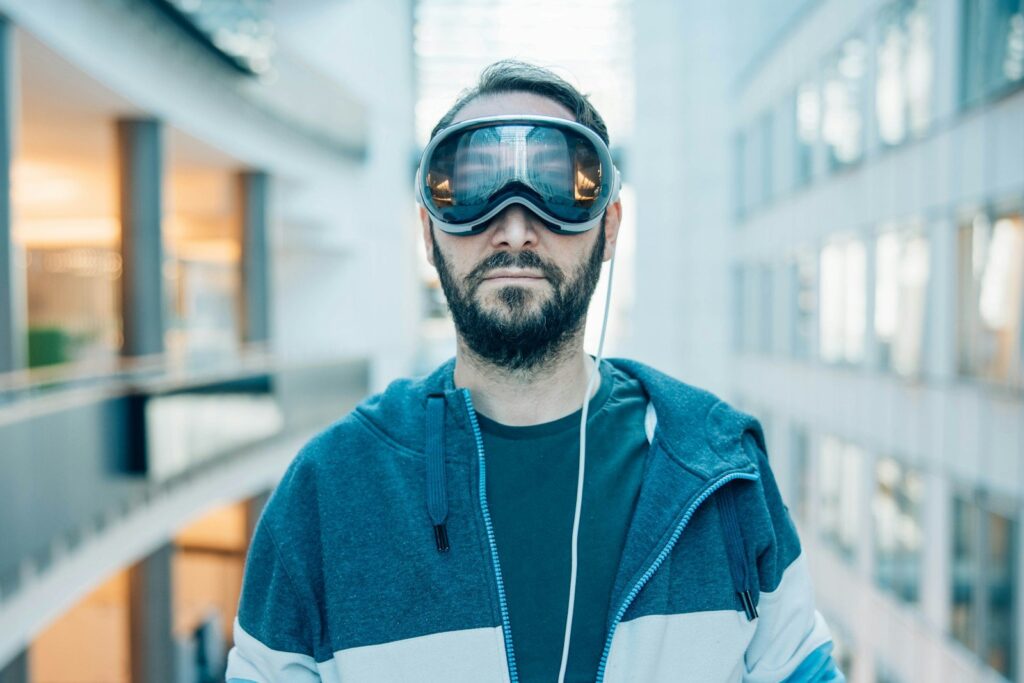
Apple’s long-rumored ambitions for augmented and mixed reality are no longer just speculative—they’re materializing into a clear, multi-year strategy. According to a newly released roadmap from trusted analyst Ming-Chi Kuo, Apple is preparing a staggered rollout of XR products that will reshape the future of wearable computing from now through 2028.
From the high-end Vision Pro headset to lightweight smart glasses designed for everyday use, the company is plotting a methodical evolution that mirrors the iPhone’s rise—starting with premium hardware and expanding toward mass-market accessibility. This roadmap offers a rare glimpse into Apple’s product pipeline and hints at how the tech giant plans to gradually replace smartphones with spatial, hands-free computing.
Apple’s Vision Series & Smart Glasses Roadmap
Apple rarely reveals long-term hardware plans, yet reliable supply-chain analyst Ming-Chi Kuo has mapped out five distinct products that steadily shrink Apple’s mixed-reality hardware from a 600-gram headset to everyday glasses. The leak clarifies how Apple intends to transform the Vision line from an early-adopter showpiece into a mass-market wearable over the next four years.
- Vision Pro (XR headset) — continues from 2025.
- Vision Air (lighter XR headset) — expected around 2027.
- Ray-Ban-like smart glasses — around 2027.
- Display accessory glasses — 2028 second half.
- XR smart glasses — TBD (possibly after 2028).
Source: Ming-Chi Kuo, June 30, 2025.
2024-2026: The Vision Pro Era
The Vision Pro headset is set to undergo continuous hardware refreshes, with an M5-powered revision expected in 2025. This update promises a 20% lighter frame and improved micro-OLED efficiency. As visionOS matures, more than 2,000 native apps are already available, and Apple is courting AAA game engines alongside enterprise giants like SAP and Adobe to broaden use cases.
Retail demos have become a powerful marketing tool, with in-store hands-on experiences reportedly converting at nearly double the rate of Apple Watch demo sessions in 2015. This underscores the headset’s experiential selling point.
2027: Vision Air and First-Gen Smart Glasses
The Vision Air, expected around 2027, will be 40% lighter than the Vision Pro, with fewer external cameras and a single 4K micro-OLED per eye. Priced under $2,000, it moves Apple into the “advanced laptop” price tier, widening the addressable audience.
Apple also plans to introduce Ray-Ban-style smart glasses, which will feature integrated speakers, dual 4K video cameras, and Siri voice plus gesture control. These glasses will compete with Meta’s Ray-Ban Meta glasses but will leverage Apple’s ecosystem for hands-free capture, navigation, and audio.
2028: Display Accessory Glasses
In 2028, Apple plans to release display accessory glasses with a tethered design. These lightweight frames will wirelessly mirror iPhone, iPad, or Mac displays at up to 120 Hz, effectively acting as “your private 4K monitor you can wear on a plane.”
Off-board processing aims to achieve multiday battery life, positioning the product as a productivity peripheral rather than a full AR device.
How Apple Is Laying the Groundwork Now
Apple’s in-house GPUs in the M-series now include hardware ray-tracing, a prerequisite for photorealistic passthrough AR. The company has reportedly secured nearly 60% of global micro-OLED capacity for 2026–2027, squeezing rivals’ panel supply.
Developer incentives, such as “Immersive Video Kit” grants and 0% App Store commission for year-one Vision apps under $5 million in revenue, aim to populate the ecosystem before Vision Air lands.
Competitive Context and Future Outlook
Meta Quest 4 is expected to cost under $500 in 2026, but early specs suggest only incremental optics gains. Meanwhile, the Samsung/Google XR partnership targets a Galaxy-class headset in 2026 using Qualcomm’s Snapdragon XR3, but lacks Apple’s vertical integration. Sony is pivoting PS VR2 toward PC compatibility, yet remains gaming-centric.
By staggering releases—premium today, lighter mid-range in 2027, peripheral glasses in 2028—Apple can iterate on components, grow the visionOS ecosystem, and educate consumers in stages. If Kuo’s timetable holds, the iPhone moment for mainstream AR likely won’t arrive until the early 2030s, but Apple is already paving the road.
“The Vision Pro represents a significant advancement in spatial computing by seamlessly blending digital content with physical space.”
Apple Vision Pro demos are available for free booking at Apple Stores, allowing potential buyers to experience the technology before purchase. The device captures spatial photos and videos in 3D, creating more immersive ways to relive memorable moments.
The Vision Pro represents a groundbreaking step in spatial computing technology, combining digital content with physical space to offer users an immersive experience through revolutionary technology and seamless integration.
As Apple continues to innovate and expand its product line, the tech giant is poised to redefine the future of wearable computing and spatial technology.






